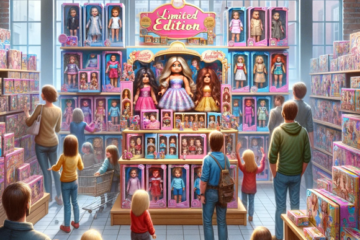In the quiet corners of human history, amidst the whirlwind of societal changes and technological advancements, there exists a timeless companion that has witnessed it all—the doll. Much more than mere playthings, dolls have been silent witnesses to the evolution of civilization, reflecting cultural beliefs, societal norms, and the very essence of humanity itself. As we delve into the rich tapestry of their past, we uncover not just the story of dolls, but also the story of us.
A Glimpse into the Ancient Past
The origins of dolls can be traced back to ancient civilizations, where they were crafted from materials readily available in nature, such as clay, wood, or even stone. These early incarnations served not only as toys but also as religious artifacts, used in rituals and ceremonies to invoke blessings or ward off evil spirits. In the archaeological record, these ancient dolls stand as a testament to the ingenuity and creativity of our ancestors, offering a glimpse into their beliefs and values.
Medieval Marvels and Renaissance Revivals
During the Middle Ages, dolls continued to hold significance, albeit with a shift towards more secular purposes. In Europe, intricately designed dolls became fashionable among the nobility, serving as both toys and status symbols. Meanwhile, in the East, particularly in Japan, the art of doll-making reached new heights with the emergence of exquisite traditional dolls like Kokeshi and Hina-ningyō, each imbued with cultural symbolism and craftsmanship.
The Renaissance period saw a resurgence of interest in the arts, and dolls were no exception. Elaborate dollhouses adorned the homes of the wealthy, complete with miniature furnishings and accessories, providing a glimpse into domestic life during that era. These miniature marvels were not just toys but expressions of wealth, taste, and social status.
Industrialization and the Birth of Modern Dolls
The advent of industrialization in the 19th century revolutionized the production of dolls, making them more accessible to people from all walks of life. Mass production techniques allowed for the creation of dolls in various shapes, sizes, and materials, catering to different tastes and budgets. From the iconic porcelain dolls of the Victorian era to the beloved rag dolls of the early 20th century, each doll encapsulated the spirit of its time.
However, it was during the 20th century that dolls truly came into their own, with the introduction of iconic figures such as Barbie and Ken. These fashion dolls not only reflected changing trends in clothing and lifestyle but also sparked debates about body image and gender roles. Despite the controversies, they became cultural icons, inspiring generations of children and adults alike.
Towards the Future: From Traditional to Technological
As we stand on the cusp of the 21st century, the world of dolls continues to evolve. Traditional craftsmanship intertwines with cutting-edge technology, giving rise to lifelike dolls equipped with artificial intelligence and interactive features. These modern marvels blur the line between reality and fantasy, offering companionship and entertainment in an increasingly digital age.
Yet, amidst the whirlwind of progress, the essence of dolls remains unchanged—a source of comfort, companionship, and creativity. Whether crafted by hand or produced in a factory, dolls continue to hold a special place in the hearts of people around the world, transcending boundaries of culture, language, and time.
In Conclusion
The story of dolls is not just a narrative of material objects but a reflection of the human experience—a journey of creativity, innovation, and cultural exchange. From ancient artifacts to modern marvels, dolls have stood the test of time, bearing witness to the triumphs and tribulations of humanity. As we cherish these cherished companions, let us remember that in their silent gaze lies a mirror to our own history and evolution.



0 Comments